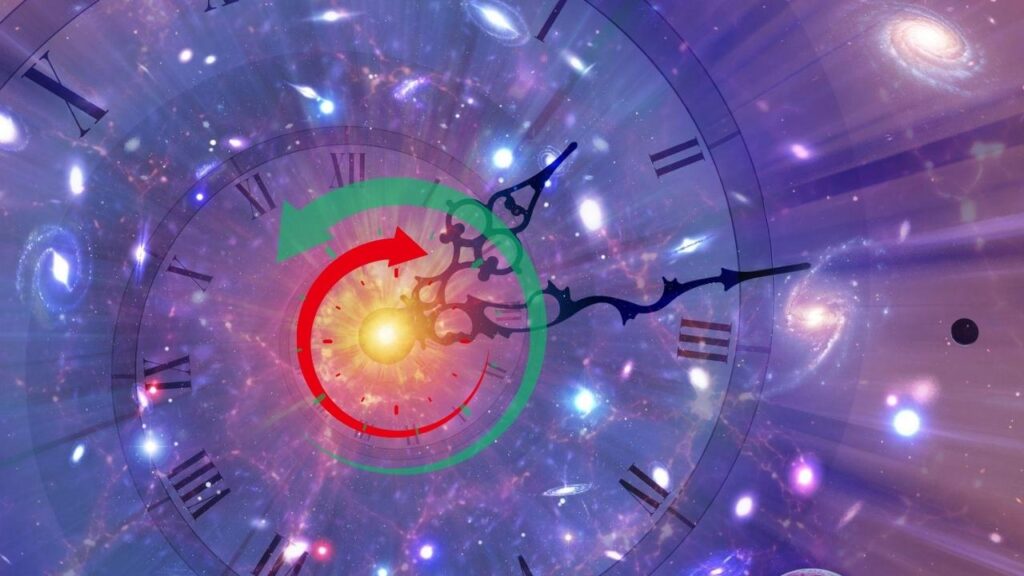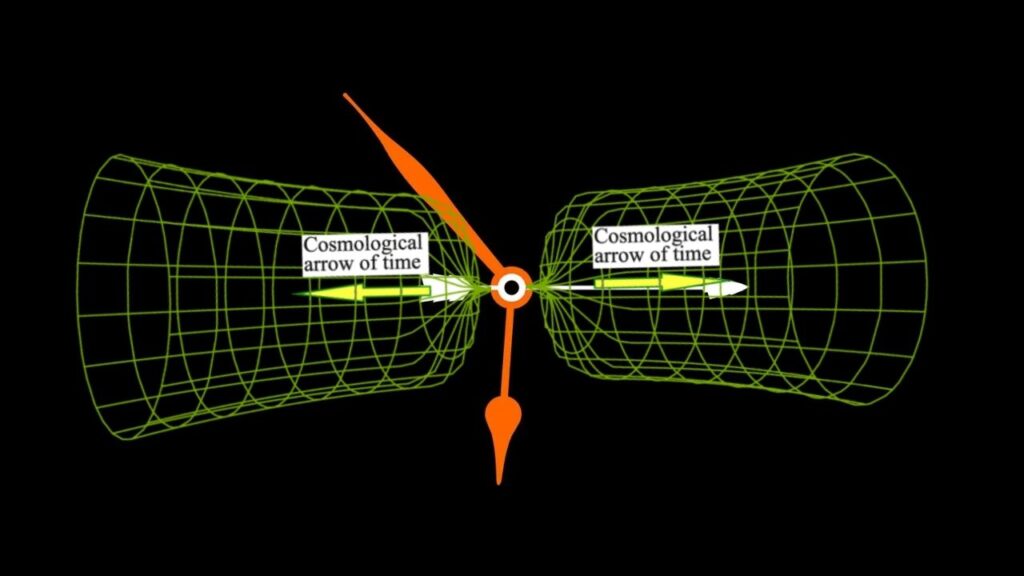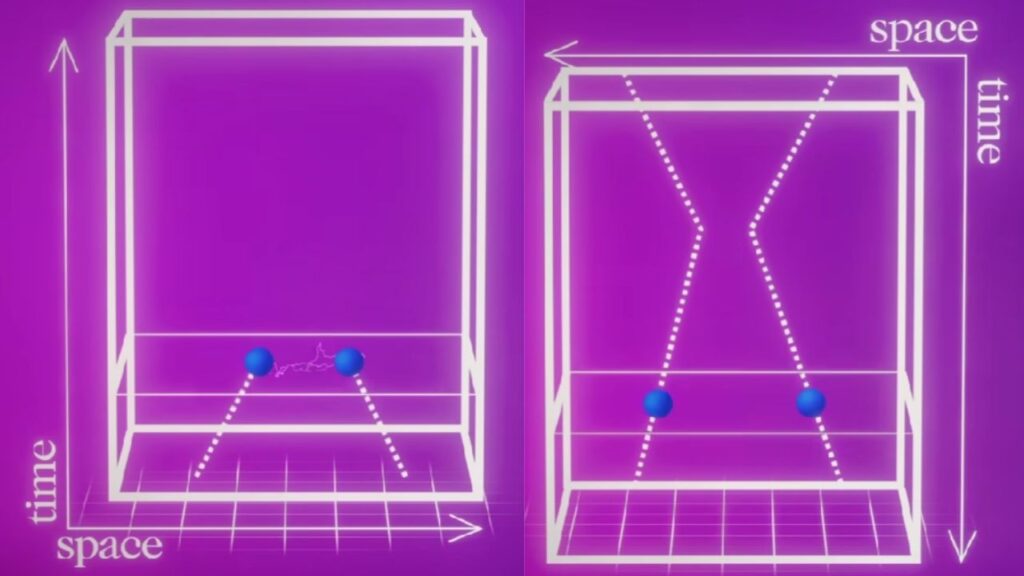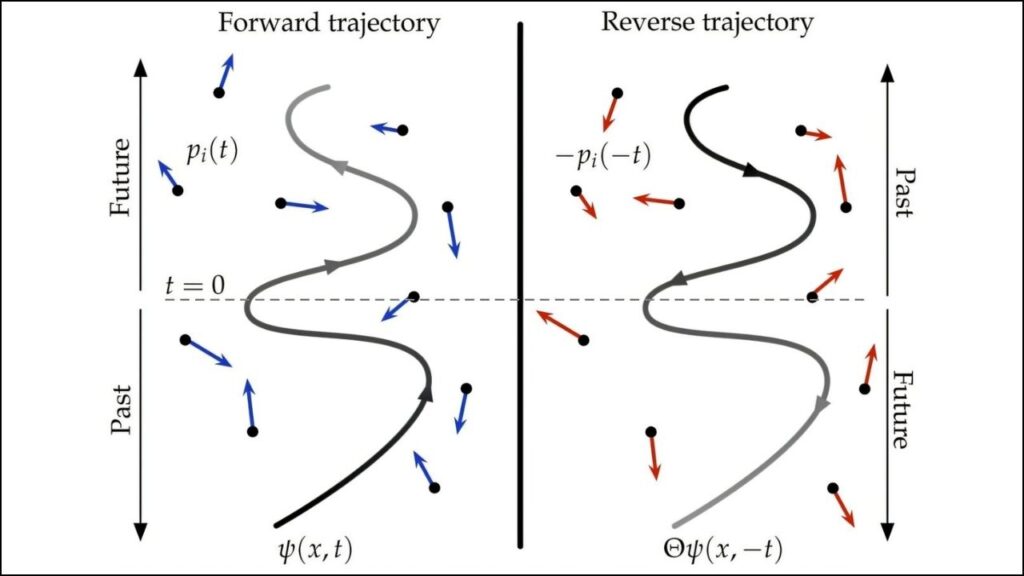Quantum-Scale Study Challenges Fundamental Physics: Imagine if time could flow both ways: forward and backward. In our daily lives, time always seems to move in one direction—from the past into the future. You spill milk, and it never spontaneously jumps back into the glass. Yet, recent groundbreaking research in quantum physics suggests that, at the tiniest scales, time’s arrow might not always point the way we expect.

A team at the University of Surrey has published new findings showing that, in certain quantum systems, time can actually flow in both directions. This discovery is shaking up our understanding of time itself, challenging the traditional view that time is a one-way street. The implications reach far beyond the quantum world—they touch on the origins of the universe, the laws of thermodynamics, and even the fabric of reality.
Quantum-Scale Study Challenges Fundamental Physics
| Feature | Description |
|---|---|
| Main Discovery | Time can flow forward and backward at the quantum level in open quantum systems |
| Research Team | University of Surrey, led by Thomas Guff and Andrea Rocco |
| Key Concept | Opposing arrows of time emerge from time-reversal symmetric dynamics |
| Implications | Challenges traditional thermodynamics, cosmology, and quantum mechanics |
| Career Insight | Opportunities in quantum physics research, quantum computing, and theoretical physics |
The discovery that time can flow both ways at the quantum level is a major breakthrough in physics. It challenges our everyday experience of time as a one-way arrow and opens up new questions about the nature of reality. While this doesn’t mean we’ll be building time machines anytime soon, it does mean that our understanding of time, entropy, and the universe is more complex—and more fascinating—than we ever imagined.
What Is the Arrow of Time?
Before diving into the quantum world, it’s important to understand what physicists mean by the arrow of time. In everyday life, time always moves forward. You can’t un-break an egg or un-spill milk. This one-way flow is called the arrow of time, and it’s closely linked to a concept called entropy—the idea that things tend to become more disordered over time.

But here’s the twist: the fundamental laws of physics don’t actually care which way time flows. If you watch a video of two billiard balls colliding and then play it backward, the physics still works perfectly. So why do we only experience time moving forward?
Quantum Mechanics and Time: A Different Story
At the scale of atoms and subatomic particles—the realm of quantum mechanics—things get strange. The equations that describe these tiny particles don’t prefer one direction of time over the other. In fact, they’re time-reversal symmetric: they work just as well whether time moves forward or backward.
But in the real world, we always see time moving forward. Why? The answer might lie in how quantum systems interact with their environment—what scientists call open quantum systems.
Open Quantum Systems: The Key to Time’s Mystery
An open quantum system is like a tiny particle surrounded by a huge environment—think of a single fish in a vast ocean. The particle can send energy and information out into the environment, but that energy and information almost never come back. This process is called dissipation.

Researchers at the University of Surrey used mathematical models to study these open quantum systems. They made two important assumptions:
- The environment is so large that energy and information never return.
- They focused only on the quantum system itself, ignoring the rest of the universe.
Even with these simplifications, the equations still behaved the same whether time moved forward or backward. This means that, at the quantum level, time can theoretically flow both ways.
Two Arrows of Time: What Does It Mean?
The most exciting part of this research is the idea that two arrows of time can emerge from the same quantum system. Imagine standing at a crossroads where time could go left or right—forward or backward. In the quantum world, both paths are possible. It’s only in the big, messy world we live in that we see time moving in one direction.
This doesn’t mean you can build a time machine or travel back in time. Instead, it means that the underlying physics allows for both directions, but in our everyday experience, one direction “wins” and becomes the arrow of time we know.

How Does This Affect Our Understanding of the Universe?
This discovery has huge implications for several areas of science:
- Thermodynamics: The laws of thermodynamics are all about the arrow of time and entropy. If time can flow both ways at the quantum level, it challenges our understanding of why things become more disordered.
- Cosmology: Some scientists speculate that the Big Bang could have created two universes, each with its own arrow of time. While this is just a theory, the new research provides a mathematical foundation for such ideas.
- Quantum Mechanics: The findings suggest that time might not be a fundamental part of reality, but something that emerges from the way quantum systems interact with their environment.
Breaking Down the Science: A Step-by-Step Guide
Let’s make this easier to understand with a simple step-by-step guide:
- Start with a Tiny Quantum System: Imagine a single atom or electron.
- Put It in a Huge Environment: Surround it with something much bigger, like the rest of the universe.
- Let Energy and Information Escape: The tiny system can send out energy and information, but it almost never gets it back.
- Watch What Happens to Time: The equations show that time can move forward or backward at this level.
- See How the Arrow of Time Emerges: In the big world, we only see time moving forward because of how information spreads and becomes disordered.
Practical Examples and Analogies
To help you picture this, think of a city with many roads. The roads are always there, but the traffic usually goes one way. Sometimes, if you look closely, you might see a car going the wrong way, but most of the time, traffic flows in one direction. In the quantum world, the roads (time) can go both ways, but in our everyday world, the traffic (the arrow of time) usually goes forward.
Another example is a movie. If you play a movie backward, the physics of the scenes still works, but the story doesn’t make sense to us. In the quantum world, the “movie” can play forward or backward, and the physics still works both ways.
Why Does This Matter for Science and Technology?
Understanding how time works at the quantum level could revolutionize several fields:
- Quantum Computing: Better understanding of time and information flow could lead to more powerful quantum computers.
- Thermodynamics: New insights into entropy and energy could help us design more efficient machines and engines.
- Cosmology: It could help us answer big questions about the origin and fate of the universe.
New Tachyon Research Hints at Possibility of Time Travel and Questions the Nature of Reality Itself
MIT Introduces New 3D Chip Design for Improved Speed and Power Efficiency
Energy-Efficient Quantum Amplifier Developed Without Loss in Performance
FAQs About Quantum-Scale Study Challenges Fundamental Physics
Q: Does this mean time travel is possible?
A: No, this research does not suggest that time travel is possible. It simply shows that, at the quantum level, time can theoretically flow both ways. In our everyday world, time still moves forward.
Q: How does this affect our daily lives?
A: Right now, it doesn’t change how we experience time. But in the future, it could lead to new technologies and a deeper understanding of the universe.
Q: What is an open quantum system?
A: An open quantum system is a tiny particle or group of particles that can exchange energy and information with a much larger environment.
Q: Why do we only see time moving forward?
A: On large scales, the way information spreads and becomes disordered means that time appears to move forward. This is called the arrow of time.
Q: Could there be another universe where time moves backward?
A: Some scientists speculate about this, but there is no direct evidence yet. The new research provides a mathematical foundation for such ideas, but they remain theoretical.






